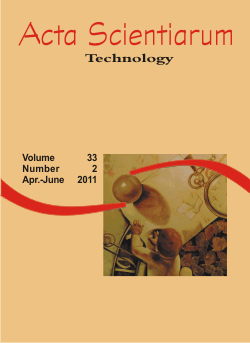<b>Fungic decomposition of tannic acid and other compounds from agri-industrial effluent</b> - doi: 10.4025/actascitechnol.v33i2.10117
DOI:
https://doi.org/10.4025/actascitechnol.v33i2.10117Keywords:
Bioremediation, laccase, tanase, Cladosporium sp., Mucor sp.Abstract
During the processing of raw materials from the sugar-alcohol industry, large quantities of wastewater is produced, which is inappropriate to release into water bodies without previous suitable treatment. The bioremediation is used to decompose organic waste until an innocuous condition or to a concentration below the limit under legislation; moreover fungi have very important role in this strategy due to the secretion of hydrolytic enzymes. In the present study, we evaluated the behavior of fungi isolated from residuals of the waste treatment station from a sugar-alcohol industry in face to the phenols degradation, as tannic acid and other compounds of agri-industrial wastewater supplemented with specific nutrients. Among different fungi, those identified as Aspergillus sp. and Cladosporium sp. presented the best rates of production of enzymes that degrade tannic acid, such as laccase, while Mucor sp. was better to remove the Chemical Oxygen Demand (COD) and the total phenol content, followed by Cladosporium sp., Phanerochaeta chrysosporium and Geotrichum candidum.Downloads
Download data is not yet available.
Downloads
Published
2011-02-23
How to Cite
Perovano Filho, N., Silva, K. F. S. da, & López, A. M. Q. (2011). <b>Fungic decomposition of tannic acid and other compounds from agri-industrial effluent</b> - doi: 10.4025/actascitechnol.v33i2.10117. Acta Scientiarum. Technology, 33(2), 145–153. https://doi.org/10.4025/actascitechnol.v33i2.10117
Issue
Section
Biotechnology
License
DECLARATION OF ORIGINALITY AND COPYRIGHTS
I Declare that current article is original and has not been submitted for publication, in part or in whole, to any other national or international journal.
The copyrights belong exclusively to the authors. Published content is licensed under Creative Commons Attribution 4.0 (CC BY 4.0) guidelines, which allows sharing (copy and distribution of the material in any medium or format) and adaptation (remix, transform, and build upon the material) for any purpose, even commercially, under the terms of attribution.
Read this link for further information on how to use CC BY 4.0 properly.











8.png)




